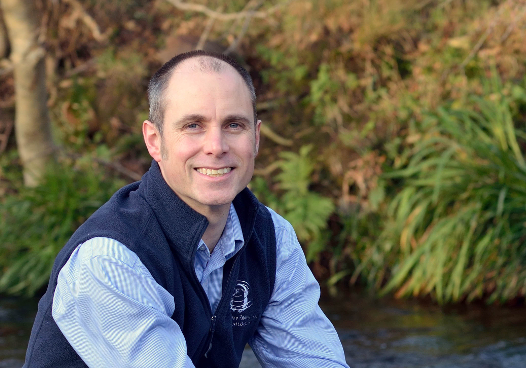
Dr Laurence Couldrick
CEO
Dr Laurence Couldrick, CEO of Westcountry Rivers Trust, discusses catchment resilience
There has been a lot of talk about drought in the past few weeks and whilst it has been the driest winter in 20 years our increasingly variable weather patterns are now part of the new norm. Climate change means we get more extreme events, whether it be periods of low flow or sudden down pours.
Whilst there are lots of global initiatives to reduce the drivers of climate change, all we can do locally is adapt to the effects of a changing climate. These effects are not only drought, but flooding, pollution and habitat loss, to name but a few.
“Our land has the ability to slow and hold water so that it does not run off over our land picking up pollutants.”
The solution to all of these issues though can be dealt with through catchment management. Our land has the ability to slow and hold water so that it does not run off over our land picking up pollutants, which subsequently floods our communities and degrades our drinking and bathing waters. Alongside this keeping water within the catchment means it is slowly released and contributes to summer base flows reducing drought.
As well as catchment management, managing water demand within both domestic and businesses use reduces costs as well as abstraction from our fresh water environments. This reduction in the demand means what we have goes further but the difficulty in both these solutions is it requires multi-sector working and this is often put in the ‘too complicated’ pile and instead technical solutions sought.
However, these technical solutions are always distant thirds, whether they be increased water treatment processess, hightened engineered flood defences or water shunting routes. Yes, we live on a small island of 60 million people and the security we have with these systems will always mean they have a place but they should be as well as, and never instead of, catchment management and water savings advice.
It is only by embracing the wider environmental and societal schemes that we achieve truly resilient catchments and communities.

